What Muscles Do Hiking Work – As someone who enjoys hiking, I’ve often wondered about the physical benefits of this outdoor activity. One question that comes up frequently is, “What muscles do hiking work?” It’s a valid question, especially if you’re looking to improve your fitness level or target specific muscle groups during your workouts.
The answer, as it turns out, is that hiking works a variety of muscles throughout your body. Some of the primary muscles used during hiking include the quadriceps, hamstrings, calves, glutes, abs, and hip muscles. By engaging these muscles consistently during your hikes, you can improve your overall strength, endurance, and balance.

Key Takeaways
- Hiking works a variety of muscles throughout the body, including the quadriceps, hamstrings, calves, glutes, abs, and hip muscles.
- Engaging these muscles during hikes can improve your overall strength, endurance, and balance.
- Hiking is a great way to get a full-body workout while enjoying the great outdoors.
Related Posts:
What Muscles Do Hiking Work
Hiking is a great way to stay active and get some fresh air while enjoying the beauty of nature. It’s also an excellent workout for your muscles, as it engages several different muscle groups throughout your body. Here are the primary muscles worked during hiking:
Quadriceps
Picture your thigh as the engine that propels you forward on every hiking adventure. Nestled at the front of your thigh, the quadriceps muscles play a pivotal role in turning your trek into a triumphant journey. These muscle warriors aren’t just passive bystanders; they’re the dynamic force behind knee extension and leg straightening – actions that are absolutely crucial when navigating various terrains, elevations, and challenges.
When you set your sights on conquering an uphill climb, your quadriceps immediately spring into action. Think of them as your personal trailblazers, diligently contracting to extend your knee joint and maintain a stable leg position with every ascending step. Whether you’re tackling rocky trails, ascending steep inclines, or facing uneven surfaces, these muscles are your unwavering allies, providing the necessary power to lift and move your body forward against the force of gravity.

The dance between your quadriceps and the terrain is a harmonious symphony of effort. As you push through each uphill segment, these muscles tirelessly engage to ensure stability and fluid movement. Your quadriceps aren’t just working – they’re thriving, adapting, and enhancing your hiking experience with every step.
Beyond the physical demands, your quadriceps also contribute to the rhythm of your stride. They maintain your leg alignment, preventing excess strain on your joints, and allowing your body to move in sync with the terrain. With each step, they demonstrate their versatility by flexing and extending to accommodate the ever-changing landscape beneath your feet.
So, the next time you embark on a hiking escapade, recognize the dynamic role your quadriceps play. They’re the steadfast companions that enable you to conquer peaks, traverse valleys, and experience the full spectrum of outdoor beauty. As you challenge yourself with varying terrains, remember that your quadriceps are there, ready to power your adventure and elevate your hiking journey to new heights.
Hamstrings
Behind the scenes of every successful hiking stride, a dynamic duo of muscles operates in harmony – the hamstrings. Nestled at the rear of your thigh, these muscles may not be in the spotlight, but their significance in your hiking journey is undeniable. Think of them as your silent partners, orchestrating seamless movements that power your every step.
As you navigate the trails, the hamstrings are the unsung heroes that keep your journey balanced and efficient. With remarkable precision, they bend your knee and extend your hip, propelling you forward with each confident stride. Their synchronized choreography with the quadriceps ensures that your movements are fluid and purposeful, whether you’re ascending steep inclines or descending rocky terrains.
But their contributions go beyond physical mechanics. The hamstrings are the architects of stability, safeguarding your body from overexertion and maintaining alignment as you traverse varying landscapes. They are the guardians of your knee joints, preventing unnecessary strain and ensuring your strides are secure and effective.
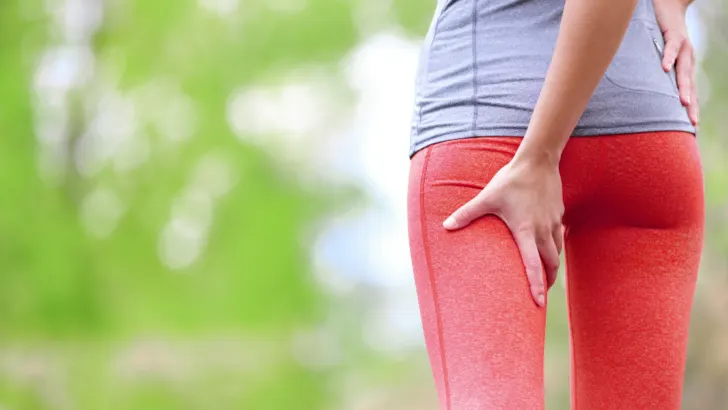
However, the harmony between the hamstrings and quadriceps isn’t just a mechanical marvel – it’s a testament to their teamwork. While the quadriceps drive your ascent, the hamstrings elegantly control your descent, maintaining control and cushioning your impact. They are the yin to your quadriceps’ yang, a perfect synergy that keeps you moving confidently across every trail.
Imagine your hamstrings as the silent mentors of your hike, offering guidance through every elevation change, every uneven path, and every twist and turn. They operate in unison with your quadriceps, ensuring your experience is not only efficient but also enjoyable. From the initial push-off to the graceful return, these muscles collaborate seamlessly to enhance your connection with nature.
So, while you forge ahead on your hiking journey, remember that your hamstrings are the steady companions that harmonize your movement. Their influence is subtle yet profound, aligning with your hiking aspirations and helping you conquer terrains with strength, stability, and grace.
Calves
Imagine your lower legs as the pillars of your hiking foundation, with the calves as the anchors that secure your every step. Nestled at the back of your lower legs, these muscles play a crucial role in propelling you upward and maintaining your balance on the trails. While they might not be the largest muscles in your body, their impact on your hiking experience is monumental.
As you ascend uphill, the calves take center stage, working diligently to elevate your heel and point your toes. This orchestrated movement is what fuels your forward momentum, carrying you upward with each purposeful stride. Their engagement is not just a mechanical action; it’s a testament to their strength and resilience as they tirelessly support your journey.
Beyond their role in propulsion, the calves are unsung stabilizers. They provide the essential support that stabilizes your ankle and foot, ensuring that each step is secure and controlled. This stability is particularly evident on uneven terrains, where the calves act as shock absorbers, absorbing impact and maintaining your balance.
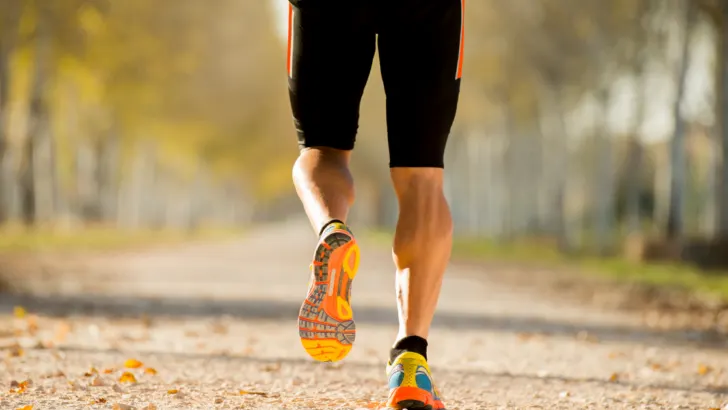
Picture the calves as the guardians of your ankle’s integrity. As the terrain varies, from rocky surfaces to gravel paths, these muscles adjust and adapt, enhancing your connection with the earth beneath you. They’re the quiet sentinels that prevent ankle rolls, minimize strain, and offer the assurance you need to tackle any trail challenge.
The relationship between your calves and hiking extends beyond the physical. Their engagement is a testament to your determination and the intricate collaboration between your body and the wilderness around you. Uphill treks become a showcase of their power, a rhythmic symphony of movement that keeps you advancing with strength and purpose.
So, the next time you embark on a hiking escapade, acknowledge the role your calves play. They’re not just muscles; they’re steadfast allies that elevate your journey. From pointing your toes to stabilizing your strides, they’re the anchors of your hiking expedition, ensuring that each step is steady, controlled, and brimming with the spirit of exploration.
Gluteus Maximus
Behind every step you take while hiking, a powerhouse muscle is at work – the gluteus maximus. Nestled in your posterior, this muscle holds the distinction of being the largest muscle in your entire body. But its size isn’t the only remarkable feature; its role in your hiking experience is nothing short of extraordinary.
The gluteus maximus is the driving force behind hip extension and thigh rotation. Imagine it as the engine that propels you upward, whether you’re ascending steep inclines or surmounting obstacles along the trail. When you engage in uphill hiking or conquer challenging terrain, your glutes step up to the plate, exerting remarkable strength to push you forward.
But its significance doesn’t end with propulsion. The gluteus maximus plays a pivotal role in maintaining your posture and stability during hikes. As you ascend, it works harmoniously with other muscles to keep your body aligned and upright. It ensures that your pelvis is properly positioned, preventing excessive strain on your lower back and maintaining a strong foundation as you navigate the trails.
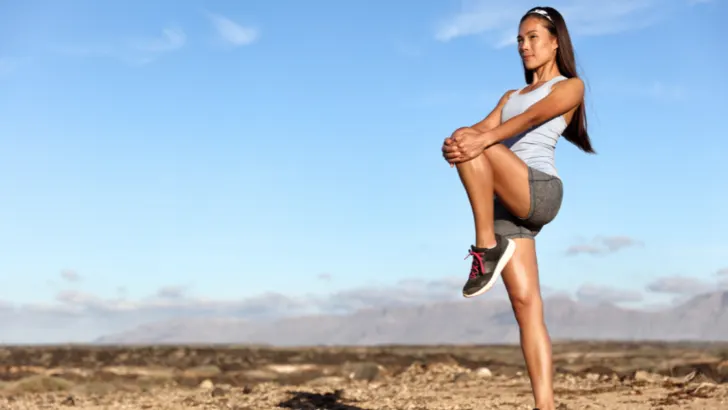
Think of the gluteus maximus as the unsung hero of every uphill climb. Its activation is a symphony of power and precision, creating a symmetrical balance that propels you onward. Whether you’re navigating rugged paths, rocky surfaces, or uneven terrain, your glutes are the guardians of your every movement.
Beyond its mechanical role, the gluteus maximus embodies the spirit of determination and progress. It’s not just a muscle; it’s a driving force that embodies your commitment to conquering challenges and seeking new horizons. With every step you take, your glutes echo your determination, pushing you to achieve your hiking aspirations.
As you ascend those hills, remember the gluteus maximus – your ultimate hiking ally. From extending your hip to rotating your thigh, it’s the muscle that ensures your strides are strong, purposeful, and laden with the thrill of exploration. With the glutes by your side, there’s no trail too steep, no obstacle too daunting. Embrace their power, and let them be the force that propels you to greater heights on every hiking adventure.
Hip Abductors
Amidst the intricate choreography of hiking, a group of muscles silently orchestrate your every step – the hip abductors. Nestled on the outer edge of your hips, these muscles play a multifaceted role that goes beyond mere movement. They’re the unsung heroes that ensure stability, balance, and efficient propulsion as you navigate through diverse landscapes.
The hip abductors specialize in the art of lateral leg movement, allowing you to gracefully move your leg away from your body. But their significance stretches further; they play a pivotal role in maintaining stability and balance, especially during challenging hikes. When you encounter uneven terrain or navigate through rocky paths, these muscles spring into action, providing the support your body needs to stay upright.
Picture the hip abductors as the stabilizers of your hiking journey. As you traverse varying landscapes, they work tirelessly to keep your pelvis aligned and your strides purposeful. Their engagement extends beyond mechanics; they’re the guardians of your posture, ensuring that every step is a confident one.
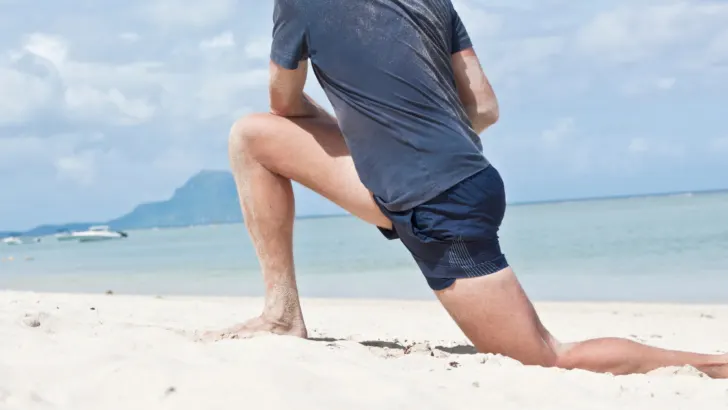
Whether you’re ascending steep inclines or descending rocky descents, the hip abductors are the silent heroes that make it possible. Their activation stabilizes your pelvis, allowing you to move with control and grace. As you tackle the trails, they prevent unnecessary strain on your lower back and minimize the risk of missteps.
But their influence goes beyond physical mechanics. The hip abductors embody the spirit of resilience and adaptability that defines your hiking journey. They’re the muscles that respond to the ever-changing landscapes, adjusting and aligning to ensure your hiking experience remains safe and enjoyable.
Consider the hip abductors as your loyal companions on every trail. They’re the steady partners that stand by your side, allowing you to conquer uneven terrain and challenging paths with confidence. From stabilizing your pelvis to ensuring balanced strides, they’re the guardians of your journey, ready to assist every step of the way.
Core Muscles
The core muscles are the guardians of your stability and movement during hikes, providing support and balance through every step. Comprising your abdominals and obliques, these powerhouse muscles ensure that your spine and pelvis remain steady, even amidst the challenges of the trail.
Imagine your core muscles as the invisible pillars of strength that underpin your every move while hiking. Nestled at the center of your body, they play a pivotal role in stabilizing your spine and pelvis, ensuring that your movements are controlled and coordinated. From ascending steep inclines to navigating uneven terrains, your core muscles are at the heart of your hiking experience.
The abdominals and obliques are particularly crucial when you’re carrying a backpack. As you shoulder the weight of your gear, these muscles engage to counterbalance the load and prevent unnecessary strain on your back. They’re like a supportive harness, distributing the weight evenly and allowing you to maintain an upright posture.
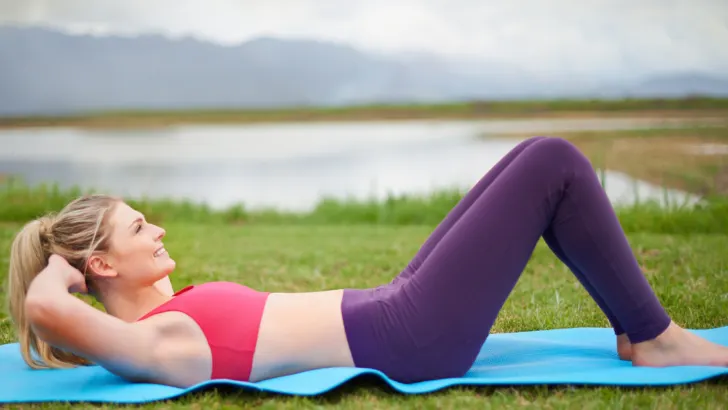
Think of your core muscles as the unwavering guides that keep you aligned and balanced. Whether you’re trekking through rugged landscapes or crossing streams, their engagement prevents your spine from swaying and your pelvis from tilting. This stability isn’t just physical; it’s a testament to their role in supporting your entire hiking journey.
Beyond mechanics, your core muscles embody resilience. They’re the strength that empowers you to tackle each challenge head-on, whether it’s a steep ascent or a rocky descent. With every step, they reinforce your posture and ensure that your movements are deliberate and purposeful.
As you hike, remember that your core muscles are the silent partners that amplify your performance. They’re the stabilizers that enhance your balance, protect your back, and allow you to navigate diverse terrains with confidence. So, the next time you embark on a hiking adventure, acknowledge the role your core muscles play. With their support, your journey becomes not just a physical endeavor, but a testament to your strength and determination.
Overall, hiking is an excellent full-body workout that engages several different muscle groups and provides a great cardiovascular workout. By incorporating hiking into your fitness routine, you can improve your strength, endurance, and overall health.
Related Posts:
The Benefits Of Hiking For Muscle Growth
Hiking is a great way to build muscle while enjoying the outdoors. It is a compound exercise that engages multiple muscle groups at once, making it an efficient way to work out. Here are some of the benefits of hiking for muscle growth:
Compound Exercise
Hiking isn’t just a walk in the woods; it’s a harmonious convergence of multiple muscle groups working in unison. Like a symphony of strength, it engages your legs, glutes, core, and upper body, creating a full-body workout that’s as invigorating as it is rewarding.
As you navigate the trails, a dynamic interplay of muscles comes to life. Uphill hikes call upon your quads, hamstrings, and glutes to power you forward. With each step, these muscles activate in synergy, propelling you up steep inclines and rocky paths. The ascent becomes a challenge met with the collective force of your lower body, leaving no muscle behind.
But the engagement doesn’t end at the summit. Hiking downhill introduces a new chapter of involvement. Your quads and calves step up to the plate, stabilizing your descent and absorbing the impact of each step. This balanced partnership ensures that your knees and joints remain protected as you conquer uneven terrain.
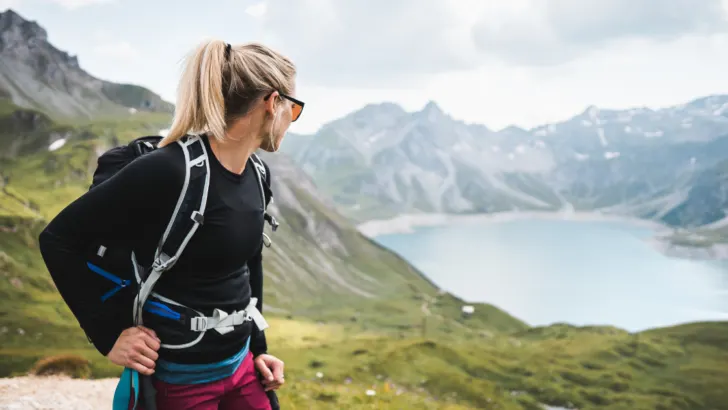
While your legs bear the brunt of the effort, your core and upper body also contribute their share. They’re the unsung heroes that maintain your balance and stability, allowing you to traverse the trails with poise. Your core muscles are the steadfast pillars that prevent swaying and tilting, while your upper body lends a helping hand to your balance.
The result? A symphony of muscle engagement that envelops your entire being. Every hike becomes a holistic workout that targets various muscle groups simultaneously. It’s not just about conquering the landscape; it’s about nurturing your physical strength and resilience.
Think of hiking as a sculptor that chisels every aspect of your physique. It tones your legs, strengthens your glutes, stabilizes your core, and empowers your upper body. The trail becomes your canvas, and each step is a brushstroke that contributes to a masterpiece of fitness.
So, as you embark on your next hiking adventure, remember that every stride is a note in this symphony of muscle engagement. It’s an opportunity to challenge and nourish your body, to build strength that extends beyond the trail. With each hike, you’re not just exploring nature; you’re sculpting a stronger, more resilient you.
Related Posts:
Low-Impact Exercise
In the realm of fitness, not all exercises are created equal, and hiking stands out as a gentle giant that offers a unique blend of strength-building and joint-friendly movement. Unlike high-impact activities like running, hiking is a low-impact exercise that embraces your joints with care, making it a remarkable choice for those seeking muscle development without compromising their joint health.
Imagine hiking as a dance that honors your body’s natural rhythm. As you tread the trails, the impact on your joints is softened, sparing your knees, ankles, and hips from the jarring forces associated with high-impact activities. This gentle touch ensures that you’re nurturing your muscles while safeguarding your joints.
Compared to the repetitive pounding of running, hiking’s footfalls are akin to whispers on the earth’s surface. The terrain becomes your partner in this dance, absorbing much of the shock that would otherwise reverberate through your joints. It’s a symphony of movement that encourages muscle engagement without causing unnecessary strain.

This unique characteristic of hiking holds immense value, particularly for those with joint sensitivities or concerns. If you’re aspiring to build muscle while keeping your joints in pristine condition, hiking presents itself as an inviting pathway. It’s an opportunity to embrace the journey of fitness without subjecting your body to the wear and tear often associated with high-impact endeavors.
Picture hiking as a nurturing embrace for your joints. It’s a chance to develop strength and resilience while enjoying the serenity of nature. Whether you’re ascending a mountain or wandering through a lush forest, each step becomes a testament to your commitment to holistic well-being.
So, if you’re seeking a pathway to muscle growth that’s gentle on your joints, consider hiking as your trusted companion. It’s a low-impact exercise that extends an invitation to nurture both your body and your spirit. With every hike, you’re sculpting a stronger, healthier version of yourself, supported by the embrace of nature’s gentle rhythm.
Cardiovascular Health
Amidst the rustling leaves and the sweeping vistas, hiking becomes more than a journey through nature—it’s a journey toward optimal cardiovascular health. The trails become your gateway to elevated heart rates, enhanced endurance, and a symphony of benefits that extend far beyond the trailheads.
Consider hiking as a heart-pumping orchestra, where every step orchestrates an increase in your heart rate. The rhythm of your strides accelerates your cardiovascular system, sending oxygen-rich blood coursing through your veins. This orchestrated effort challenges your heart to work efficiently, enhancing its capacity and strength.
With each ascent and descent, your heart responds by pumping blood more vigorously, effectively training itself to become a more powerful instrument of vitality. This surge in cardiovascular activity contributes to improved endurance, allowing you to tackle longer hikes and conquer steeper terrains.
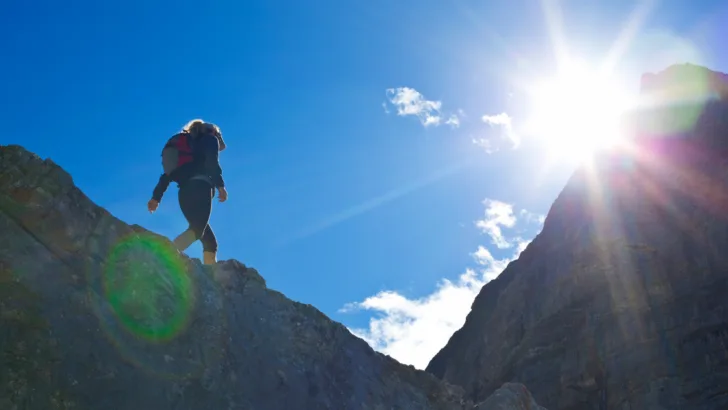
The beauty of hiking lies in its dual approach to wellness. While you’re building muscle and toning your body, you’re also nurturing your cardiovascular health. This synergy creates a comprehensive fitness journey that touches upon various aspects of well-being.
Furthermore, the benefits of hiking extend far beyond the physical realm. As you traverse the trails, your cardiovascular system reaps rewards that go deeper than the surface. Studies have shown that hiking can lower your risk of heart disease, stroke, and chronic conditions. It’s as if each step is a pledge to safeguard your heart’s health, while nature’s serenity supports your emotional well-being.
Picture hiking as an investment in your longevity, with every trail offering dividends of cardiovascular health. Whether you’re wandering through forests, ascending peaks, or crossing meadows, your heart is at the forefront, gaining strength and resilience with every adventure.
So, lace up your hiking shoes and let the trails become your path to cardiovascular vitality. With each hike, you’re not only building muscle and improving your overall fitness but also fortifying the very core of your well-being. The symphony of your heart’s health harmonizes with the beauty of nature, creating a crescendo of wellness that echoes through every facet of your life.
Mood And Stress
In a world bustling with activity, hiking emerges as a serene sanctuary where stress dissolves and moods ascend to new heights. Nature’s embrace becomes your haven, inviting you to shed worries and embrace tranquility. Beyond the breathtaking vistas, hiking offers an invaluable gift—a respite for your mind and a balm for your soul.
Imagine stepping into a world where the rustling leaves and the soothing hum of flowing streams replace the cacophony of daily life. The trails become your portal to relaxation, enveloping you in an atmosphere of peace that only nature can provide. This communion with the outdoors triggers a remarkable response within your body: the reduction of cortisol, the stress hormone.
As you wander through the wilderness, cortisol levels wane, allowing your body to step away from the clutches of stress. This phenomenon isn’t just a matter of comfort; it’s a pivotal factor in your muscle-building journey. Elevated cortisol levels have been linked to muscle breakdown, making stress reduction an ally in your quest to sculpt a stronger physique.
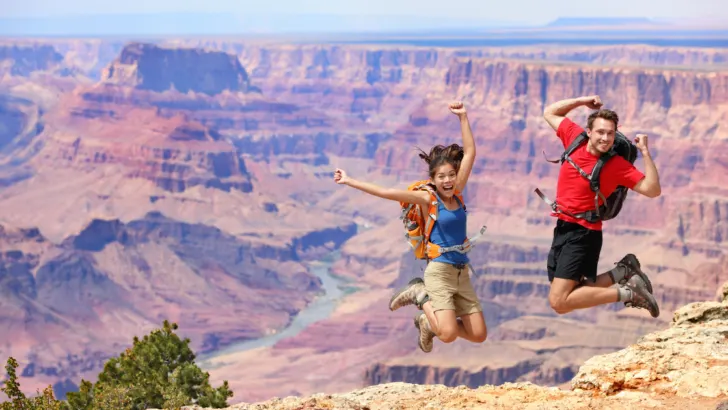
Hiking offers another secret ingredient to your well-being: endorphins. These natural mood boosters are released when you engage in physical activities like hiking, igniting feelings of euphoria and contentment. With each step, the rhythm of your hike prompts your body to unleash this symphony of positivity, wrapping you in a cocoon of happiness.
Imagine hiking as a dance of emotions, a rhythm of well-being that tunes your body and mind to a harmonious frequency. Nature’s canvas becomes your palette of serenity, painting away stress and unfurling the colors of joy. Each hike is a brushstroke that strokes not just your physical vitality, but also the canvas of your emotional equilibrium.
So, as you lace up your hiking shoes, remember that every step is an invitation to release stress, elevate your mood, and welcome the embrace of nature’s tranquility. With each hike, you’re not just building muscle; you’re nurturing your soul, finding solace amidst the trails, and letting the beauty of nature rekindle the light within.
Related Posts:
Conclusion
In conclusion, hiking is an excellent way to work out several muscle groups in your body while enjoying the great outdoors. The muscles worked in hiking include the quadriceps, hamstrings, glutes, calves, core, and low back. Additionally, this aerobic activity is also a fantastic workout for your heart and will improve cardiovascular health.
To summarize the information gathered, the table below shows the main muscles worked in hiking:
| Muscle Group | Function |
|---|---|
| Quadriceps | Powering up inclines |
| Hamstrings | Stabilizing knee and hip joints |
| Glutes | Providing power for uphill climbs |
| Calves | Providing stability and power for uphill climbs |
| Core | Providing stability and balance |
| Low Back | Providing stability and support |
It is important to note that the intensity of the hike, the gear used, and the terrain can affect which muscle groups are engaged the most. Therefore, it is important to choose a hike that matches your fitness level and goals.
Overall, hiking is a low-impact, high-reward activity that can improve your physical and mental health. So, grab your hiking boots and hit the trails to work out those muscles and enjoy the beautiful scenery.
Frequently Asked Questions
What are the primary muscles used during hiking?
During hiking, the primary muscles used are the quadriceps, hamstrings, calves, glutes, abs, and hip muscles. These muscles work together to provide the necessary strength and stability to climb hills, navigate rocky terrain, and maintain balance on uneven surfaces.
How does hiking affect leg muscles?
Hiking is an excellent workout for leg muscles. It strengthens and tones the quadriceps, hamstrings, calves, and glutes. The constant movement of walking uphill and downhill engages these muscles and helps to build endurance. Hiking can also improve flexibility in the legs and reduce the risk of injury.
Is hiking a good workout for abs?
Yes, hiking can be a good workout for abs. The constant movement of walking uphill and downhill engages the core muscles and can help to strengthen and tone the abs. However, to get the most out of hiking as an ab workout, it is important to maintain good posture and engage the core muscles throughout the hike.
What are the differences in muscle use between hiking and running?
Hiking and running both engage many of the same muscles, but there are some differences in muscle use. Hiking engages more of the hip muscles and glutes while running engages more of the calf muscles. Hiking also provides a lower-impact workout than running, which can be beneficial for those with joint pain or injuries.
Can hiking help build glutes?
Yes, hiking can help to build glutes. The constant movement of walking uphill and downhill engage the glute muscles and can help to strengthen and tone them. To get the most out of hiking as a glute workout, it is important to maintain good posture and engage the glute muscles throughout the hike.
Does hiking count as a form of strength training?
Yes, hiking can count as a form of strength training. The constant movement of walking uphill and downhill engages many of the major muscle groups in the body and can help to build strength and endurance. However, to get the most out of hiking as a strength training workout, it is important to challenge yourself with more difficult terrain and to maintain good posture throughout the hike.
